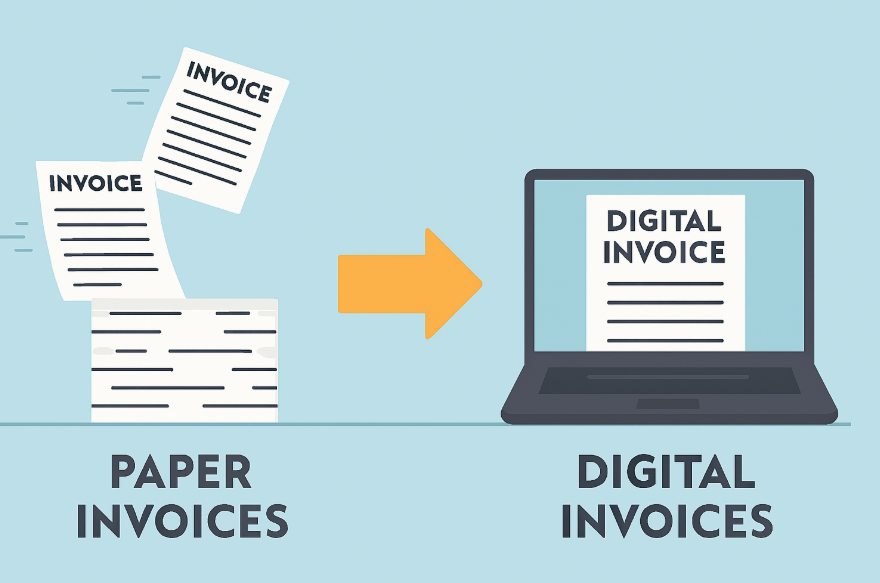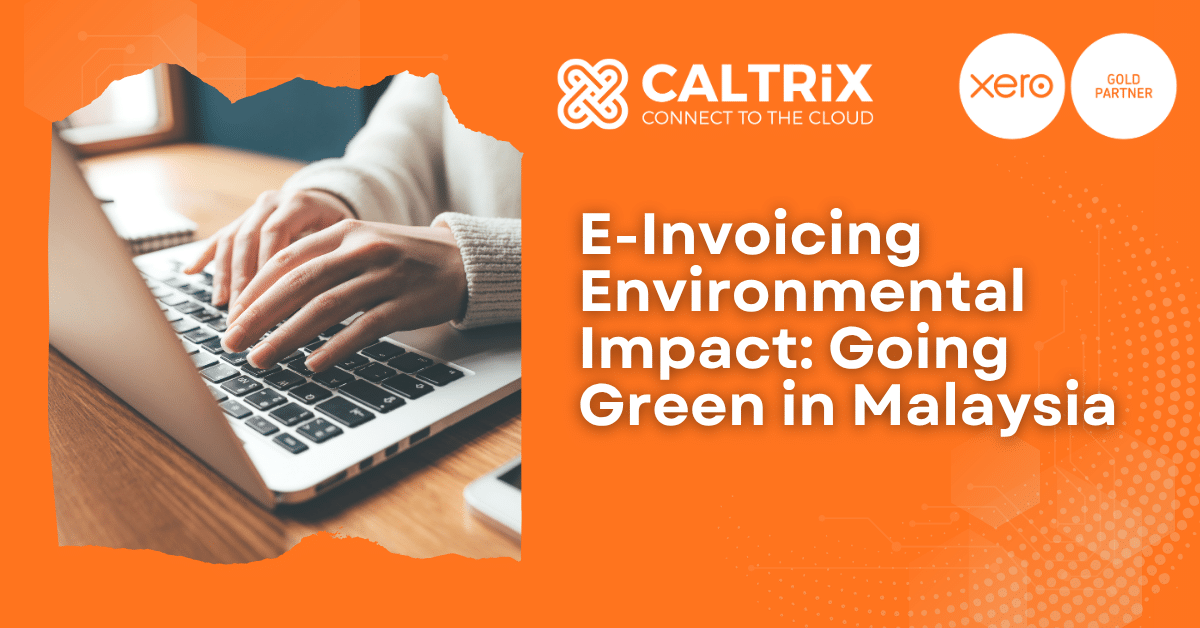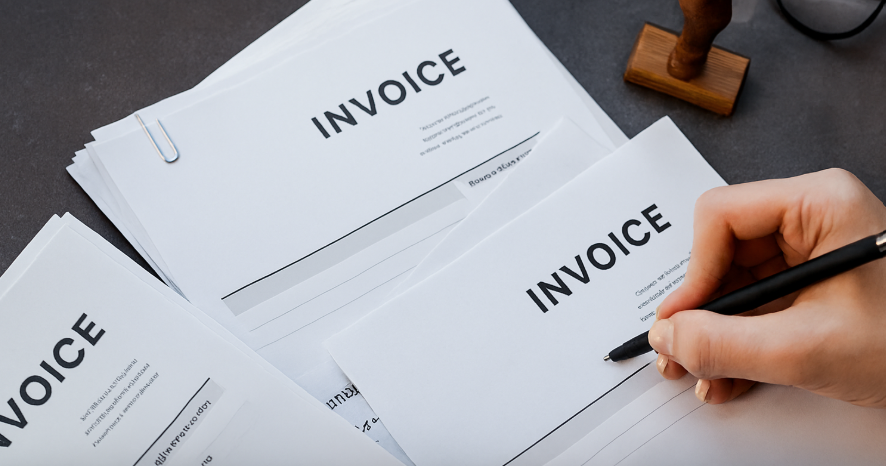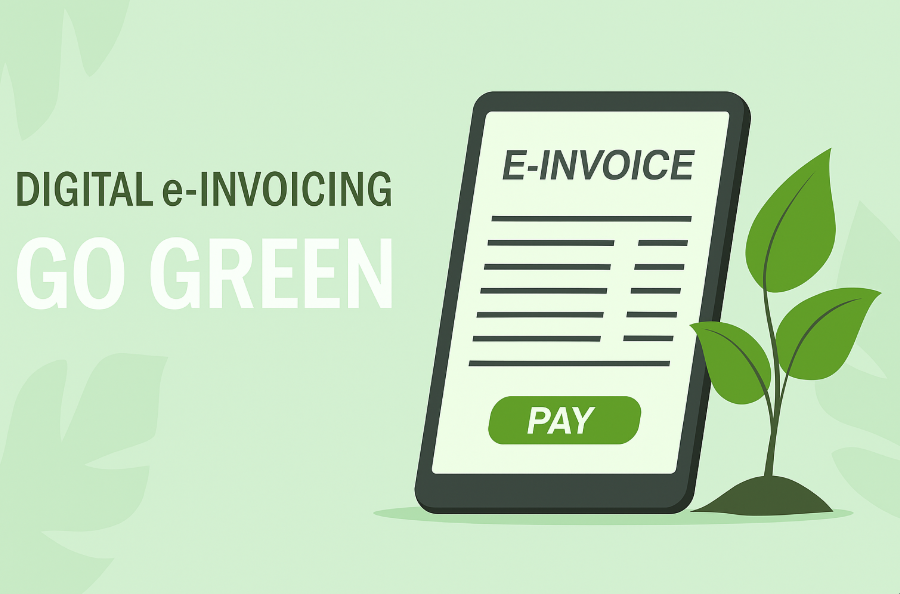Malaysia is moving from traditional invoicing methods to electronic invoicing as part of a nationwide digital transformation. The Inland Revenue Board of Malaysia, also known as LHDN or the Inland Revenue Board, has confirmed a phased e invoicing implementation that will culminate in full coverage on 1 July 2026. That means businesses of different annual turnover sizes will enter the system across multiple phases before all taxpayers are covered. Early preparation helps ensure compliance, unlocks cost savings, and supports environmental sustainability goals.
From an environmental perspective, replacing paper invoices with digital invoices reduces paper usage, paper production and paper waste, cuts transport and physical storage space, and lowers carbon emissions. Research on the lifecycle impact of office paper estimates about 4.29 to 4.74 grams of CO₂e per A4 sheet even before counting printer energy or distribution. At scale, moving from paper invoices to electronic invoicing can avoid around 18.9 tons of CO₂e per one million electronic bills when compared with paper, based on recent peer-reviewed work. Switching from paper invoices to electronic invoices significantly reduces resource consumption, lowers carbon emissions, and mitigates waste and pollution associated with traditional paper invoicing. These environmental benefits directly support sustainability goals and social responsibility commitments in Malaysia’s growing digital economy.
Introduction to E-Invoicing in Malaysia
E-invoicing in Malaysia marks a significant milestone in the nation’s digital transformation journey, offering businesses a smarter, greener way to manage their invoicing processes. By moving away from paper invoicing and embracing electronic invoicing, companies can streamline invoicing processes, enhance tax compliance, and boost operational efficiency. The Inland Revenue Board has mandated a phased rollout of e invoicing in Malaysia, ensuring that all taxpayers transition smoothly to this new standard.
This shift brings a host of benefits: businesses can reduce manual tasks, minimize errors, and automate routine steps, leading to substantial cost savings and improved cash flow. Electronic invoicing also supports environmental sustainability by cutting down on paper waste and reducing the need for physical storage. With e invoicing solutions, organizations can maintain accurate financial records, accelerate the payment process, and adopt sustainable business practices that align with modern expectations. As Malaysia’s business landscape evolves, e invoicing is set to become an essential tool for companies seeking to optimize their operations and contribute to a more sustainable future.

Digital Invoices And The Core Environmental Benefits
Switching to digital invoices turns an analog workflow with high resource use into a digital format that is lighter on the planet. Digital invoicing is an integrated, secure, and environmentally friendly solution that improves financial operations, enhances supplier relationships, and promotes automation and transparency within business processes. Each paper invoice typically uses multiple A4 sheets plus envelopes, toner or ink, and energy for printing and transport. By contrast, an electronic invoicing process eliminates the bulk of paper consumption, reduces manual tasks and data entry, and removes courier trips for invoice processing and approval routing. The cumulative effect is a meaningful reduction in the environmental impact of invoicing.
Environmental Benefits E Invoicing Businesses Can Measure
- Reducing paper usage and paper waste: Fewer sheets consumed and disposed of, which lowers carbon footprint tied to paper production and printing.
- Lower transport emissions: No postal journeys or courier runs for invoice delivery, which reduces fuel burn and carbon emissions. A large empirical study on electronic billing shows double digit tons of CO₂e avoided per million digital transactions.
- Less physical storage space: Digital archiving replaces filing cabinets and off-site storage, cutting materials and trips for retrieval.
- Energy efficiency opportunities: Centralized e invoicing platforms and e invoicing systems can be hosted in efficient cloud environments that often save energy compared with the end-to-end paper chain.
Environmental Impact of Traditional Invoicing
Traditional invoicing methods, which rely heavily on paper invoices, have a considerable environmental impact. The production and use of paper for invoicing require significant amounts of natural resources, including wood, water, and energy, leading to increased paper usage and paper consumption. This process contributes to deforestation, water pollution, and higher carbon emissions, all of which negatively affect environmental sustainability. Additionally, the transportation and storage of paper invoices add to the carbon footprint, while managing paper waste presents ongoing challenges for businesses.
By adopting e invoicing, companies can dramatically reduce their reliance on paper, helping to lower their overall carbon footprint and support a circular economy. The transition to electronic invoicing not only reduces paper consumption and waste but also delivers cost savings by eliminating expenses related to printing, storage, and distribution. Ultimately, moving away from traditional invoicing methods is a crucial step for businesses aiming to minimize their environmental impact and embrace more sustainable business practices.
E Invoicing In Malaysia: Policy, Phases, And Requirements
Malaysia’s tax administration is rolling out e invoicing requirements by annual turnover, then broadening to all businesses. The e invoice data flow will pass through the national MyInvois platform using direct API, the MyInvois Portal, or accredited intermediaries. The final date for full inclusion is 1 July 2026. The official pages confirm the phasing and the model, while professional updates track how businesses should plan their invoicing process and transaction processes across B2B, B2C, and B2G.
Key points for businesses
- Understand regulatory requirements and e invoicing regulations set by LHDN.
- Prepare your e invoicing implementation plan early so you can streamline invoicing processes, ensure compliance with tax regulations, and safeguard sensitive financial data throughout financial transactions.
- Track how e invoice data must be structured for credit notes, debit notes and other documents so your accounting practices and financial records stay audit-ready.
- It is essential to adopt e invoicing to meet government mandates, align with sustainability goals, and stay compliant with regional laws and digital transformation initiatives.
Carbon Emissions: The Hard Numbers Behind Green Invoicing
Multiple studies estimate a non-trivial carbon footprint for paper use alone. A frequently cited lifecycle analysis places each A4 sheet at about 4.29–4.74 g CO₂e. This does not yet account for printer electricity or distribution. If your traditional invoicing methods use two sheets per invoice and you print 100,000 invoices a year, paper consumption alone can contribute roughly 0.86 to 0.95 tons of CO₂e, before mailing or storage.
Carbon Emissions Avoided By Electronic Invoicing
A 2023 analysis of billing systems quantified the environmental impact of electronic billing at scale, finding ~18.9 tons CO₂e avoided per one million electronic bills compared with paper. The exact savings vary by assumptions, but the directional benefit is consistent. For larger organizations issuing millions of invoices, adopting e invoicing becomes one of the simplest environmentally friendly business practices to support environmental sustainability in back-office operations.
Cost Savings, Operational Efficiency, And Business Efficiency
E invoicing benefits extend beyond environmental responsibility. Digital transformation of the invoicing process reduces material costs for paper invoices, envelopes, and ink, and it eliminates postage or courier fees. It also reduces manual tasks such as rekeying invoice data and reconciling errors, which lowers processing costs and shortens cycle times. These gains in operational efficiency and business efficiency translate into improved cash flow and a steadier cash flow profile because invoices go out faster, approvals are quicker, and payment process frictions are reduced.
Faster Invoice Processing, Fewer Human Errors
Electronic invoicing gives finance teams instant validation checks before submission to tax authorities, so human errors are caught early. E invoicing platforms typically support automated matching, reminders, and exception handling. By minimizing manual data entry, companies improve data quality and secure sensitive financial data more consistently than ad hoc email attachments or paper handling.
Accounting Practices And Compliance With Malaysia’s Tax Administration
Good accounting practices will align chart-of-accounts mapping, tax codes, and invoice data fields with LHDN’s schema. This helps ensure compliance with the clearing process and prevents rejection by tax authorities. Your e invoicing solutions should support consolidated invoices where allowed, individual invoices when required, and proper issuance of debit notes and credit notes. The goal is to assist businesses to comply with e invoicing requirements without adding complexity to everyday business operations.
Tax Compliance And Regulatory Requirements
Malaysia’s tax administration is explicit that e invoicing is becoming the standard. Businesses should set up the correct identifiers, such as Business Registration Number and Tax Identification Number, and channel their e invoice data via MyInvois. Vendors such as Xero provide guidance on how Malaysian entities can register and send e invoices, including prerequisites like BRN and TIN and how registration links to tax authorities.
E-Invoice Data and Security
As businesses transition to e invoicing, safeguarding sensitive financial data becomes a top priority. E invoicing systems are designed to protect the confidentiality and integrity of invoice data throughout the entire invoicing process. Leading e invoicing platforms utilize advanced security measures such as encryption, secure socket layer (SSL) protocols, and strict access controls to ensure that e invoices are transmitted and stored securely.
Compliance with data protection regulations, including Malaysia’s Personal Data Protection Act 2010, is integral to maintaining trust and meeting legal requirements. E invoicing systems also offer real-time tracking and monitoring of invoice data, enabling businesses to quickly detect and address any discrepancies or security concerns. By prioritizing data security, companies can confidently manage their financial data, streamline their invoicing processes, and foster stronger relationships with customers and suppliers in the digital economy.
E Invoicing Implementation: A Practical Roadmap
1. Baseline Today’s Traditional Invoicing
Audit traditional invoicing. Record how many paper invoices you produce, your average pages per invoice, postage share, and reprints. Quantify the environmental impact using credible factors for paper consumption and printing, then estimate your carbon footprint reduction once you switch to digital invoices.
2. Choose The Right E Invoicing Solutions And Platforms
Select e invoicing systems that integrate with your ERP or accounting software. Choosing the right e invoicing system is a key part of national digital transformation initiatives, meeting regulatory compliance requirements, and supporting environmental sustainability efforts related to electronic invoicing technology implementation across different countries. Look for coverage of e invoicing in Malaysia including schema support for MyInvois, easy mapping of invoice data, and options for API or portal submission. Xero maintains guidance for Malaysian e invoicing and outlines how to connect registration and submission steps, which helps businesses ensure compliance while streamlining transaction processes.
3. Design For Security And Data Quality
Safeguard sensitive financial data by using role-based access, audit trails, and encryption. Build validation rules that check tax compliance fields before submission. Ensure continuity between sales orders, invoice processing, and payment process data so audit reviews are straightforward.
4. Map Change Management And Training
Plan user training for finance, sales, and procurement. Document new accounting practices for credit notes, debit notes, and self-billing scenarios. Align standard operating procedures so everyone understands how the invoicing process will work in the digital format.
5. Pilot, Measure, Improve
Start with a pilot group of suppliers and customers. Track cycle time, exceptions, rejection rates by tax authorities, and percentage of transactions issued as digital invoices. Measure cost savings and environmental benefits such as reducing paper consumption and paper waste. Use these metrics to refine your e invoicing implementation and expand adoption.
Adopting E Invoicing: Real-World Examples And Environmental Responsibility
Medium-Sized Malaysian Distributor
- Before: 60,000 paper invoices per year, two pages each, 30 percent mailed.
- After adopting e invoicing: 92 percent digital invoices within six months, instant validation at creation, human errors reduced during data entry.
- Environmental sustainability impact: Approximately 120,000 sheets avoided. Using the 4.29–4.74 g CO₂e per sheet factor, this equals about 0.52 to 0.57 tons CO₂e avoided from paper alone, plus additional savings from reduced courier use. Add higher business efficiency, faster approvals, and improved cash flow.
Services Company With Strong CSR
- Before: Traditional invoicing with legacy software and off-site physical storage space.
- After: E invoicing platforms linked to MyInvois, digital archiving of financial records, automated reminders for late payments, and steady cash flow through faster settlements.
- CSR link: The firm publishes annual sustainability goals and can now report lower carbon footprint from back-office processes and demonstrate how its invoicing supports environmental sustainability and social responsibility.
These scenarios are typical for businesses modernizing their business processes. They underscore that adopting e invoicing is both a compliance step and an environmentally friendly business practice that supports environmental sustainability in measurable ways.
E Invoicing Solutions That Support Malaysian Requirements
Integration With MyInvois And LHDN
Modern e invoicing platforms connect directly to the MyInvois gateway or to the portal. Vendors provide implementation guides, testing environments, and ongoing updates so businesses can keep pace with regulatory requirements. Xero’s Malaysia hub explains how e invoicing changes affect financial transactions and how its software helps register and send compliant e invoices. This guidance can assist businesses that want to move quickly and reduce project risk.
Handling Exceptions And Cross-Border Needs
If your company engages in international trade, confirm how foreign currency, cross-border supplies, and export documentation interact with e invoicing requirements. Ensure your solution can issue compliant credit notes and debit notes and reconcile them to underlying invoices without manual tasks.
Accounting Practices And E Invoice Data Quality
Structuring E Invoice Data
Use standardized tax codes, product and service classifications, and customer identifiers so invoice data is complete and consistent. This improves matching, reduces human errors, and supports analytics on payment cycles, cash flow, and aging. It also makes it easier to analyze business operations and operational efficiency, helping leadership see how the invoicing process fits into broader digital transformation efforts.
Controls And Audit Readiness
Design controls around changes to e invoice data, approval limits, and posting to the ledger. Keep robust logs for any adjustments to financial data, and align with tax compliance requirements from Malaysia’s tax administration and the Inland Revenue Board. This is important both for ensuring compliance and for satisfying auditors or tax authorities if questions arise.
Carbon Emissions, Climate Change, And Malaysia’s Reporting Direction
E invoicing streamlines data collection for sustainability reporting because it digitizes a high-volume process. Malaysia is aligning with the IFRS Sustainability Disclosure Standards in stages, and listed companies are moving toward climate-related reporting. While timelines differ by market segment, the direction is clear. Companies that adopt sustainable practices in finance operations, like e invoicing, can more easily quantify improvements and report them.
From Environmental Responsibility To Competitive Advantage
Documenting how e invoicing supports environmental responsibility can strengthen procurement credentials and partner selection, especially with customers seeking vendors that adopt sustainable practices. For many tenders, proof that you support environmental sustainability and have measurable reductions in carbon footprint is now a differentiator.
Conclusion
E invoicing has a clear environmental impact in Malaysia. It reduces paper usage and paper waste, lowers carbon emissions from printing and logistics, and simplifies compliance with e invoicing regulations from LHDN. At the same time, it improves operational efficiency, streamlines the invoicing process, strengthens controls around financial data, and accelerates the payment process, helping you maintain a steady cash flow.
Ready to adopt sustainable practices that support environmental sustainability and ensure compliance with Malaysia’s tax administration?
Talk to Caltrix about implementing e invoicing solutions integrated with Xero. We assist businesses with end-to-end e invoicing implementation from system setup and mapping to testing, supplier enablement, and reporting of environmental benefits. Start your move to adopting e invoicing today and make your back office greener, faster, and more compliant.
FAQs
- Will e invoicing really reduce our environmental impact?Yes. The combination of reduced paper invoices and fewer delivery journeys brings tangible reductions. Peer-reviewed research shows double digit tons of CO₂e avoided per million electronic bills relative to paper.
- How does e invoicing in Malaysia align with LHDN (Inland Revenue Board) requirements and environmental responsibility?Malaysia’s tax administration is mandating structured e invoicing via MyInvois. Compliance projects that digitise the invoicing process inherently deliver environmental wins (less paper, less fuel, less storage), letting you ensure compliance while advancing environmental responsibility.
- Will adopting e invoicing hurt operational efficiency while we “go green”?No, usually the opposite. Environmental gains come alongside operational efficiency: fewer manual tasks, less data entry, automated validations, faster invoice processing, and improved cash flow from quicker approvals and payments.



